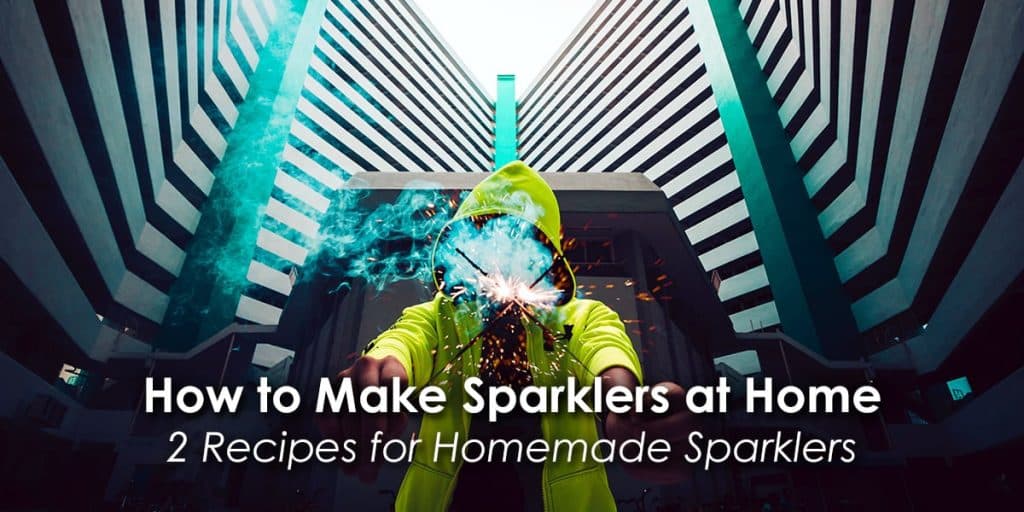
Sparklers are by far the most readily-available type of fireworks on Earth. They are even found at gas stations and grocery stores during certain parts of the year. For most people, there is always a place nearby to buy sparklers year-round. However, there are still a variety of reasons that someone may be interested in making homemade sparklers. For instance, this could be cool for a school Science teacher looking for a fun chemistry experiment. Fortunately, the basic recipe is not very complicated and you can make them mainly from items that are easily found and relatively safe with proper handling.
However, it is very important to understand the risks involved with making your own sparklers. Personally, I do not condone working with pyrotechnic compounds without proper training and certification. Moreover, our company is certainly not in favor of this practice either. Frankly, certain compounds and processes used to make sparklers commercially are completely prohibited for civilian use. In this post, I will cover how they are made, what is restricted, and why it is best left to the professionals.
There are two common recipes for making homemade sparklers that are regarded as the “standard”. We did not create these recipes; they are readily available across the internet. The first one is the simplest list of ingredients while the second requires special compounds and more sophisticated methods to put together. Again, I do not encourage anyone to make these recipes at home; but I feel like the information should be at your disposal. Here they each are in full detail.
*PLEASE DO NOT ATTEMPT TO MAKE SPARKLERS AT HOME. If you decide to try either of these recipes, YOU DO SO AT YOUR OWN RISK. These recipes are for informational purposes only, and are publicly available on many websites. We are not responsible for any use or misuse of this information, and strongly urge you to leave this to the professionals.
This simple recipe doesn’t require any special knowledge whatsoever. They can be made using ordinary items found in many homes across the country. Unfortunately, they will not perform the same as commercially made sparklers because they are chemically different. However, they will create sparks in the color purple; and that can be enticing to many DIY scientists and chemists. Here is the recipe.
This recipe for DIY sparklers is much more advanced than the first. It requires a lot more experience and less common materials. This method should only be done by qualified people such as school Science teachers as a teaching aide. However, the result will be much more akin to the products you find on store shelves. The end result will be a sparkler that is chemically similar to the real ones. Please do not attempt to make these if you are not familiar with chemistry and certified to handle all of the necessary compounds. Here is the recipe.
If you are interested in making your own sparklers as a way to save money, it’s a bad investment. Overall, the cost of all the materials and equipment will be much greater than the retail price of traditional sparklers; and that doesn’t even factor in your time! Honestly, the only practical benefit from these recipes is for educational and informational purposes. Combining materials to create useful compounds is captivating, and it can draw in your students to learning. Furthermore, they can be a fun project anyone with the qualifications to do so. Personally, I’ll just choose the ones off the shelf.
Unfortunately, there are a lot of recipes out there that encourage restricted compounds or manufacturing processes. If you look hard enough, you can find anything on the internet. However, I’m proud to say that these two recipes use completely legal methods and materials; though should still only be considered by qualified people. After researching many concepts, these are the two that I felt most comfortable with sharing.
That fact of the matter is that there is a fine line between a cool science experiment and a dangerous situation. Sadly, some of the homemade sparkler recipes out there encourage the use of very caustic items without even describing the proper way to handle them. Proper education and experience are vital when engaging in any science project. If you aren’t 100% confident that you know what you’re doing, please do not attempt to make them.
© 2024 Twin Fireworks